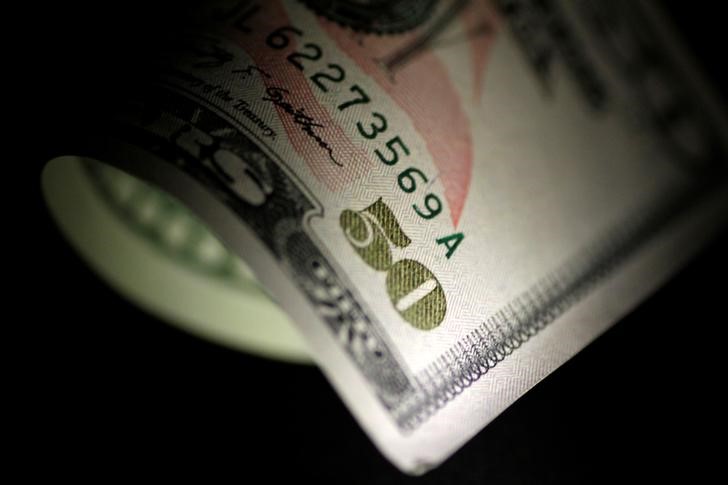Investing.com - The dollar rose to fresh 2018 highs on Tuesday amid heightened geopolitical risk ahead of an announcement on the future of the Iran nuclear deal and after a hawkish signal from Federal Reserve Chairman Jerome Powell.
The U.S. dollar index, which measures the greenback’s strength against a basket of six major currencies, climbed 0.53% to 93.10 by 10:21 AM ET (14:22 GMT), the highest level since mid-December.
Safe haven demand for the dollar was underpinned as investors remained cautious ahead of an announcement by U.S. President Donald Trump later in the day about the future of an international nuclear agreement with Iran, which he has repeatedly threatened to withdraw from.
The U.S. currency received an additional boost after Fed Chairman Jerome Powell warned in a speech in Zurich that markets should not be surprised by further policy tightening.
Rising U.S. Treasury yields and broadly solid economic data have boosted the dollar in recent weeks, underlining expectations for a steady pace of interest rate increases by the Fed this year.
The central bank has projected two more increases for the year, but some investors expect three more.
Strength in the dollar pressured the euro, with EUR/USD falling 0.64% to 1.1846, a level not seen since December 22.
The euro failed to find much support after data showing that German industrial output rose more than expected in March. The report helped ease concerns that the euro area’s largest economy is facing headwinds from rising protectionism.
Data on Monday had shown that German industrial orders dropped for a third month running in March.
A recent soft patch of economic data has given rise to speculation that the European Central Bank may not be able to end its asset purchasing stimulus program in September, as some investors had expected.
Sterling was also weaker, with GBP/USD sliding 0.49% to a four month low of 1.3488.
The dollar’s gains against the traditional safe haven yen were held in check, with USD/JPY edging up 0.12% to 109.21.
The commodity linked currencies were pressured lower as oil prices pulled away from multi-year highs ahead of the announcement on Iran. Should Trump pull the U.S. out of the agreement, Iranian crude exports could be hit, adding to tightness in the oil market.
The Canadian dollar fell to seven-week lows, with USD/CAD advancing 0.72% to 1.2974.
The Australian dollar plumbed fresh eleven month lows, with AUD/USD down 1.00% to 0.7439, while the New Zealand dollar was at its lowest since December, with NZD/USD losing 0.81% to trade at 0.6957.
